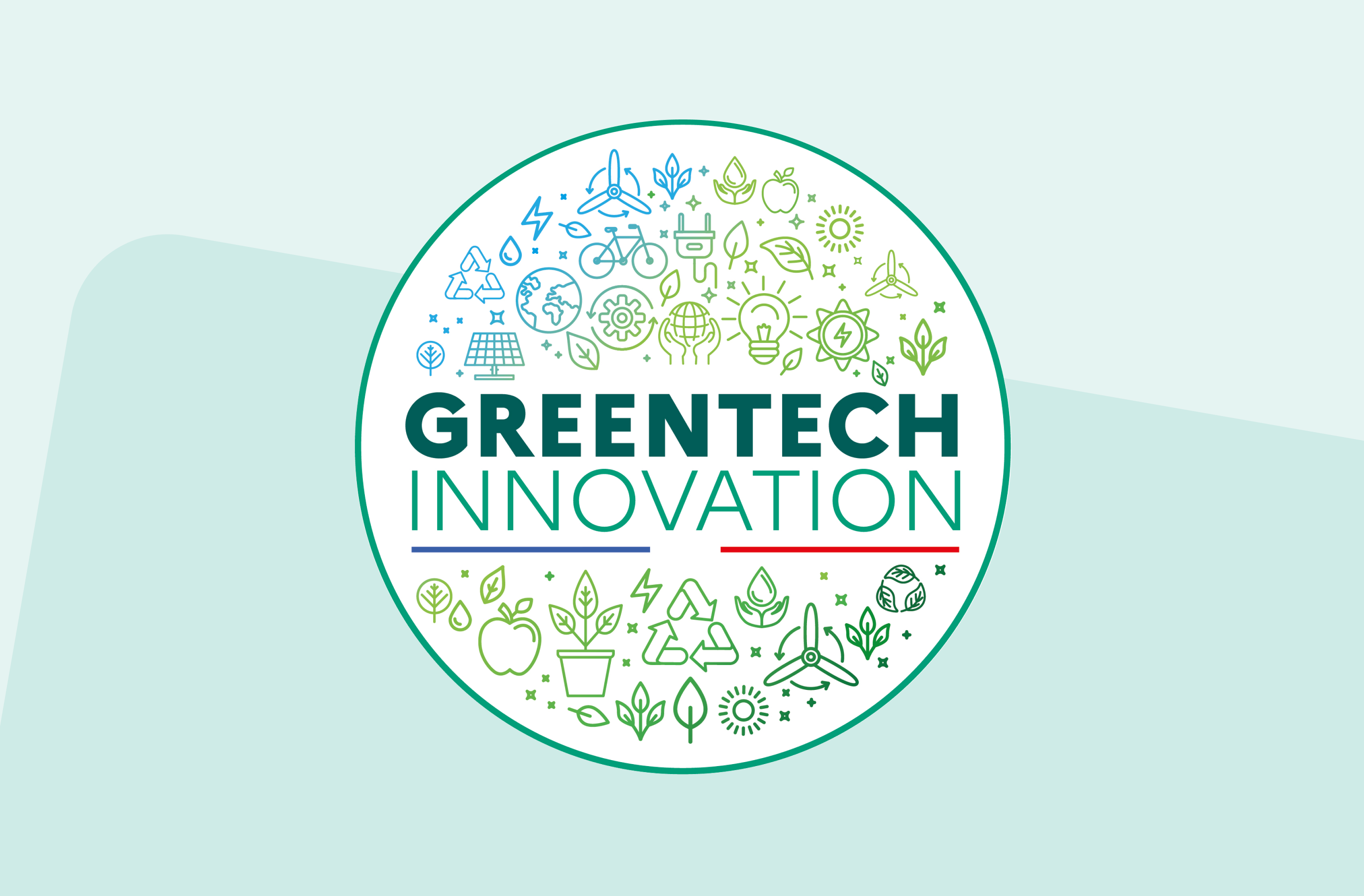Digital pollution: what is the carbon footprint of digital technology?

Discover our all-in-one solution
Computer, tablet, smartwatch, voice assistant; whether at home or at work, all these electronic devices seem indispensable. At first glance, quite trivial, they actually produce digital pollution. quite substantial, whether because of their manufacture or their use. Today, many companies are looking at the issue of the digital carbon footprint to reduce its ecological and economic costs.
But what exactly is digital pollution? What are the figures for this pollution? Are there actions that can be taken to reduce the carbon footprint of digital technology in business?

What is digital pollution?
We are hearing more and more about digital pollution, especially with all the new digital tools that are constantly coming onto the market. Even if you don't see it, this virtual pollution is very real.
To define digital pollution, we can say that it is all forms of pollution emitted by new technologies and their impact on the environment. This concerns:
- soil erosion and biodiversity loss
- chemical pollution
- the production of electronic waste because of the difficulty in recycling these objects.
- Greenhouse gas emissions
The harmful effects are mainly induced by the manufacture of digital devices. By themselves, you can use them (almost) as you like, but if you change your company's digital fleet every year, the environmental impact will be huge.
This digital pollution concerns the entire sector, from servers to network infrastructures. The entire chain is taken into account in the digital carbon footprint.
Digital pollution comes from 7 main sources :
- digital equipment
- data storage centers
- The e-mails
- Social networks
- The streaming
- printing digital documents
- The search engines
The issue of digital pollution should therefore not be overlooked when you are a company that wants to reduce its carbon footprint, and engage in a CSR approach.
What is the carbon footprint of digital technology?
Once we have become aware of all the links in the digital chain, what is the carbon footprint of the sector? Here are some figures on this digital pollution, whether for the manufacture or use of these everyday tools.
In its July 2019 report, the think-tank The Shift Project details that Digital pollution accounts for 4% of global greenhouse gases. To give an order of magnitude, if the Internet were a country, it would be the 3rd largest consumer of electricity in the world, behind China and the United States.
There is a real energy excess where greenhouse gas emissions are concentrated especially during the first stages of the life of an appliance. For a smartphone, this can represent up to 90% of emissions!

The manufacture of digital devices
Why do digital devices pollute so much during their manufacture? The problem lies in extracting the raw materials needed to build them. The more complex these new technologies are, the more rare materials they require.
Congolese tantalum, Australian gold, Bolivian lithium, all this can be found in our daily digital tools. Extracting them, in addition to exhausting these natural resources, requires a lot of energy, often fossil fuels, water and a large workforce.
In addition to highly polluting extraction, then manufacturing, the finished product must then be imported. All this invisible pollution is called imported pollution.
For example, building a computer requires on average:
- 240 kg of fossil fuels
- 22 kg of chemical products
- 1.5 tons of water.
It is all the more alarming that this sector is booming. The June 2020 Green IT report highlights that there could be a 9% increase in energy consumed per year by the digital sector, for production and use.
In France, it is estimated that 60 million people use the 631 million digital devices present on the territory. That's an average of 11 devices per person! Globally, this figure is around 8 and includes:
- The computers
- The telephones
- Smartwatches
- The televisions
- Voice assistants
- Bluetooth speakers.
The environmental impact of the internet
In 2020, 59% of the world's population went online, according to the We Are Social Digital 2020 report. This may sound pretty reasonable, but it's a figure that's constantly increasing! In 2018, 1 million new users joined the Internet every day!
30% of the energy used in the digital sector is used for the daily use of our devices, 20% is used for social networks, and 15% of the energy consumption makes data centers run.
Browsing the Internet, even if it seems without consequences, is a source of pollution. For example, 2 searches on Google generate about 15 g of CO2, which is equivalent to the consumption of 113 liters of tap water.
However, the Internet is now indispensable in professional and personal fields. But simple actions exist to reduce the carbon footprint of digital technology.

Greenhouse gases from emails
If there is one thing that proves that digital pollution is not only virtual, it is the awareness that there has been in recent years around e-mails, which can quickly have a significant impact.
Sending an email with a 1 MB attachment is equivalent to 1 bulb left on for 1 hour, or 19 g of CO2. And the heavier the attachment in an email, the greater the carbon footprint will be.
A company with a hundred employees, which sends an average of 332 emails on a daily basis, will have a carbon footprint on this position equivalent to 13 return flights from Paris to New York.
And 5G in there?
Often, we hear that 5G would be more ecological because for the same volume of data, it would use less energy than 4G. This is not false in itself, but the switch to 5G involves many changes, which in turn are very polluting.
The volumes of data transferred will be much larger, which will increase electricity and energy consumption: this is the famous rebound effect. Likewise, to use these new devices compatible with 5G, all the equipment in the 4G network infrastructure must be changed, and the devices of individuals.
According to a study by the High Council for Climate, the implementation of 5G will lead to an increase of 18 to 45% in the carbon footprint of digital technology in France by 2030. This takes into account the explosion of new connected terminals and infrastructures.
What steps can you take to reduce digital pollution in business?
1. Pay attention to the use of your mailbox
Simple actions can already have a significant effect on the digital impact within a company:
- avoid sending attachments that are too large. For example, FileVert allows you to transfer files in a virtuous and eco-responsible way.
- reduce the number of mailings by unchecking the automatic “reply to all” option
- sort regularly and delete your trash and spam
- unsubscribe from newsletters that you no longer read
- avoid signatures and images if that is not relevant.
Combined with a search engine that offsets the carbon footprint, such as Ecosia, these actions can actually have a significant impact on reducing a company's digital pollution.
2. Make the life of your devices last
We all know what planned obsolescence is. But how can you succeed in extending the life of business terminals? In addition to looking to repair a device if it is broken, here are some tips that can help extend the life of digital equipment:
- respect the charging recommendations
- use economy mode
- avoid opening too many tabs and programs at the same time
- regularly maintain its IT fleet by a professional and protect them against viruses
3. Manage your data
Few businesses take the time to really sort through the data they store. The best thing is to find out about the legal retention period for each type of evidence in order to sort as best as possible and to keep only what is necessary.
This also makes it possible to be better organized and to have better protection of personal data.
4. Think about renting equipment
It is not always necessary to buy new terminals to renew your IT fleet. In addition to reducing the ecological impact of the company, renting computer equipment greatly reduces the costs of the digital budget.
La computer equipment rental is part of a real circular economy approach where the advantages are numerous:
- support and maintenance service: Rzilient guarantees you in particular an effective after-sales service within 48 hours
- flexible management with rentals without commitment and the possibility of purchasing equipment at the end of the contract
- avoid planned obsolescence
- No need for a large cash flow to unlock the purchase of the IT fleet
5. Give priority to refurbished
The UN, in a 2013 report, indicates that 75% of electronic waste does not pass through recycling channels. They are exported illegally to countries like India or China and are piled up in huge landfills.
Besides, it is very difficult to recycle all the small components and precious materials in our phones, computers, and generally our digital devices, because their design makes separating the materials difficult.
Is it a need, or the desire to have the latest fashionable device? Sometimes attractive promotions can make you want to renew the entire fleet of digital devices.
Buying refurbished equipment ensures that it is reset, cleaned, and inspected prior to sale. It is cheaper than a new device for the same functions and features.
Today, the legal minimum warranty for a refurbished digital device is 6 months, and will increase to 12 months from 1 January 2022. At Rzilient, this one-year warranty, with the possibility of extension, is already in place. We make every effort to help you transition from refurbished to digital sobriety by buying or renting refurbished terminals.
Digital sobriety: the best solution to reduce digital pollution in companies
All these small actions taken end to end tend towards what is called digital sobriety.
What is digital sobriety?
The term “digital sobriety”, created in 2008 by the Green IT association, is an approach that aims to review its digital services in order to make them more sober, and to moderate its daily digital uses.
Digital technologies could become as polluting in 5 years as the automotive sector is today.
The few actions to adopt for a greener digital daily life at work are easy for employees to apply. But digital sobriety can go further, with real thought beforehand.
How do you reach it?
Becoming aware of the challenges of the environmental impact of digital technology is already taking a first step in the right direction! Wanting to deploy digital sobriety in business allows choices to be made according to the environmental challenges to be met.
It is a question of thinking about company equipment, the deployment of infrastructures, if they are necessary, and how. This questioning leads to that of the uses of each one. The key is to seek to have a system that meets real needs, and to identify the conditions that make digital technology relevant in your business. Before implementing a “smart” innovation, it is necessary to rely on forecast environmental assessments to see if they are really “smart”.
The first step in moving towards digital sobriety is to think about refurbished. The Reconditioned equipment is also becoming more and more popular in businesses ! The environmental impact is lower since technological tools are not new. Their uses and capacities remain the same as for new devices, but the environmental impact is much more advantageous, as are the economic costs! The environmental impact is lower since technological tools are not new. Their uses and capacities remain the same as for new devices, but the environmental impact is much more advantageous, as are the economic costs!






